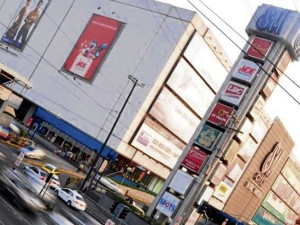
SM Sta. Mesa in Manila believes that its shoppers and mall tenants should breathe and live the green and eco-friendly way.
Is your go-to mall a green structure?
Fact: The Metro Manila cityscape is dotted with numerous malls—large and small. Fact: The number is so big that its contribution to the so-called carbon footprint is inevitable. But how do malls keep its daily operations green in the world of shopping-crazy Pinoys?
Take for instance the mall empire of tycoon Henry Sy. Aside from the commonly seen boxy structure and a gaggle of people flocking these shopping havens, what do you know about this retail giant?
Inquirer Property looked into SM Sta. Mesa, one of the earliest SM Supermalls in the country—next to the North Edsa branch in Quezon City.
Established in September 1990, it was previously called SM Centerpoint due to its strategic location in the heart of three bustling cities of Manila, Quezon and San Juan. The whole property boasts an area of 33,000 square meters and with a leasable space of 67,395 sq m.
As a pioneer mall which has a growing customer base of 600,000 within the 2-kilometer radius, the building has to ensure that its shoppers and mall tenants breathe and live the green and eco-friendly way.
For its part, SM Sta. Mesa installs the Building Management System which monitors the energy consumption of the building. The computer-assisted BMS adjusts the temperature of the mall to its desired setting and gives feedback as to how energy is used.
Engineer Adonamarie Dimapilis, building administrator officer, said the BMS has helped them a lot to conserve energy.
As with other SM supermalls, SM Sta. Mesa has a sewerage facility wherein used water is transferred to a plant for treatment. The treated water is then directed to a cooling tower that powers the mall’s air-conditioning system. Of course, the use of waterless urinals is a big help to reduce water consumption, Dimapilis said.
The mall’s layout has been made customer-friendly with multilevel parking slots of 1,260. The expansion has spanned to the improvement of its food court, veranda and its new digital cinemas.
Corporate social responsibility
But not a few people know about SM’s initiative of tackling the road to green and sustainability. Eco-bags have been commonplace; a Green Festival regularly draws moviegoers into its roster of “green” documentaries. Recently, there was series of lectures on environmental awareness in what they call the “Green Retail Agenda” (GRA).
In line with the mall-wide agenda of educating students, tenants and employees, SM Sta. Mesa recently held its version of the GRA under its theme “Empowerment by sustainability.”
The mall hopes to foster awareness that it can also be a venue for community development and to bring environmental protection to public consciousness.
“The change is toward sustainability,” said engineer Mark Louie Sta. Ana, SM Sta. Mesa mall manager, in his speech to welcome the audience composed mostly of students from nearby colleges such as the UERMMC College of Medicine, the Polytechnic University of the Philippines, San Beda College and the sole high school contingent from the Fountain International School.
Bacolod-based nongovernmental organization Alternative Indigenous Development Foundation Inc. (Aidfi), was invited to address the conference and share their project which recently bagged the BBC World Challenge Award.
Called the hydraulic ram pump project, this water system supplies drinking water to remote villages in Negros Occidental and other parts of the country. One of its strongest suits is that it utilizes no fuel or electricity. The group is a proud recipient of this year’s Ramon Magsaysay Award, Asia’s equivalent of the Nobel Prize. Aidfi is founded in 1991 by Leonidas Baterna, a union worker and Auke Idzenga, a Dutch development worker.
Ms Earth Philippines title holder Catherine Untalan, Ms Earth Foundation executive director, meanwhile, highlighted the benefit of the environment and shared firsthand advocacy projects and her group’s green initiatives.
The change, she said, must start with ourselves even if it means changing our lifestyle. She confessed that she brings her own “little eco-bag” everywhere she goes.
The GRA started in 2008 and becomes an annual conference hosted by SM Prime Holdings that provides a forward thinking view on the social, economic and environmental effects of green retail. This hopes to strengthen the public’s participation and empower them to contribute to the green efforts of various sectors.
Among SM’s programs also include Trash to Cash, a monthly recycling market fair and the “My Own Bag” movement on Wednesdays.

